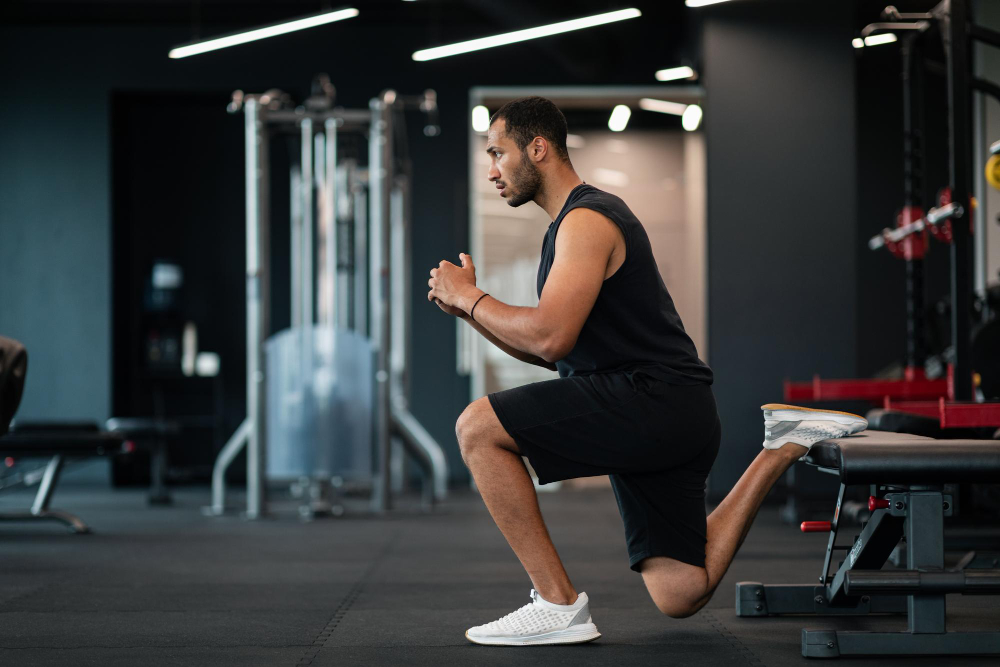Knee pain is a game-changer. It turns everyday movements into a chore and makes leg day feel like a landmine. But the worst part? Most people keep grinding through the wrong exercises, thinking pain is part of the process. It’s not.
If you’ve got bad knees, whether from an old injury, arthritis, or just wear and tear, you need to train differently. That doesn’t mean skipping leg day. It means being smarter about it. This post breaks down the leg exercises to avoid with bad knees.
Why Certain Leg Exercises Are a Problem for Bad Knees
The knee supports your weight, absorbs impact, and lets you bend, squat, run, and jump. But it’s also fragile, especially when it’s pushed in the wrong ways. Unlike muscles, joints don’t just bounce back from overuse or bad form.
What makes the knee tricky is its design. It’s a hinge joint, built more for stability than rotation or side-to-side motion. When you load it incorrectly, like forcing it forward too much in a squat or twisting it during a lunge, you’re putting stress on parts that aren’t built to take it, like the cartilage and ligaments.
The pain you feel isn’t your muscles getting stronger. It’s your joints waving a red flag.
Some leg exercises amplify this stress with poor angles, heavy loads, or too much impact. If you’re dealing with knee problems, these movements can turn discomfort into real damage. The good news? You don’t have to suffer through it. You just need to know what to avoid.
Leg Exercises to Avoid with Bad Knees
Not all leg exercises are created equal, especially when your knees are already compromised. Some moves are just bad news. Here’s what to skip (and what to do instead):
Deep Squats (Especially with Heavy Weights)
Yes, squats are a staple. But deep squats, where your hips drop way below your knees, put a ton of pressure on your knee joint, especially under heavy load. If you’ve got knee issues, this is where pain usually kicks in hard.
Better move: Stick to box squats or go to parallel only. Focus on form, not depth. Strength isn’t measured in how low you go, it’s how well you move.
Forward Lunges
Forward lunges are a knee killer. The forward momentum can drive your front knee too far past your toes, jamming the joint and stressing the ligaments. They’re also easy to do wrong, especially when you’re tired.
Better move: Reverse lunges. They shift the load away from the front knee and give you more control. Bonus: they’re easier on balance too.
Leg Extensions on Machine
This machine might look harmless, but it’s brutal on the knees. Isolating the quad while sitting puts unnatural torque on the kneecap, especially at the top of the movement. It’s a joint stressor disguised as a muscle builder.
Better move: Step-ups or wall sits. They hit your quads without the joint strain.
Jump Squats and Plyometrics
Explosive movements like jump squats, box jumps, and burpees demand strong knees. If yours aren’t up for the challenge, the impact can be devastating. The landing phase, especially, can turn a small tweak into a full-blown injury.
Better move: Slow it down. Use tempo squats or resistance bands to build strength with control.
Running on Hard Surfaces or Treadmills
It’s cardio, not a crime, right? Maybe. But if you’re pounding pavement or sprinting on a stiff treadmill, your knees are absorbing a repetitive, jarring impact. Over time, that leads to inflammation and breakdown.
Better move: Try cycling, rowing, or swimming. You’ll get your heart rate up without wrecking your knees. For more ideas, check out this article.
The Mistakes That Wreck Your Knees (Even with ‘Safe’ Exercises)
Even “knee-friendly” exercises can go sideways if you’re careless. These are the sneaky mistakes that cause trouble:
- Going too fast. Rushing through reps kills form. Momentum takes over, and your knees end up doing work your muscles should handle.
- Skipping the warm-up. Cold joints are stiff joints. Jumping into leg work without a warm-up is like driving with the parking brake on.
- Wearing the wrong shoes. Old, flat, or unsupportive shoes don’t give your knees what they need. Your feet absorb shock first—if they fail, the knees take the hit.
- Ignoring mobility work. Tight hips and ankles force your knees to compensate, which they’re not designed to do. That compensation = pain.
- Chasing weight over control. Heavy lifting with poor form isn’t strength. It’s a shortcut to injury.
Final Thoughts
Bad knees don’t mean you’re benched for life. But they do mean you need to be smarter about how you train. The wrong leg exercises can turn a manageable issue into something that keeps you sidelined long-term.
Skip the deep squats, ditch the leg extension machine, and save your knees from the abuse of high-impact moves. Instead, focus on controlled, joint-friendly alternatives that build strength without the strain. And remember: it’s not just what you do, it’s how you do it. Warm up right, move with intention, and don’t let ego drive your workouts.





